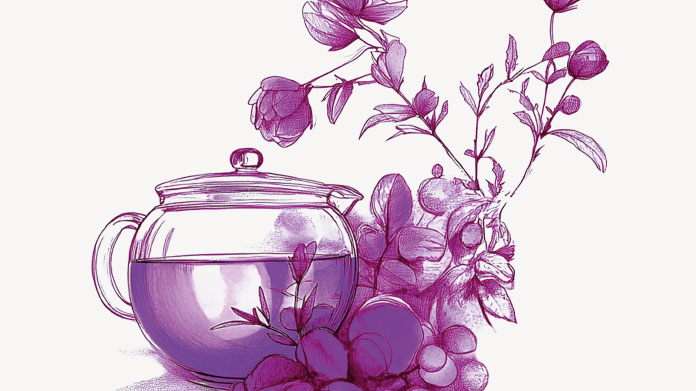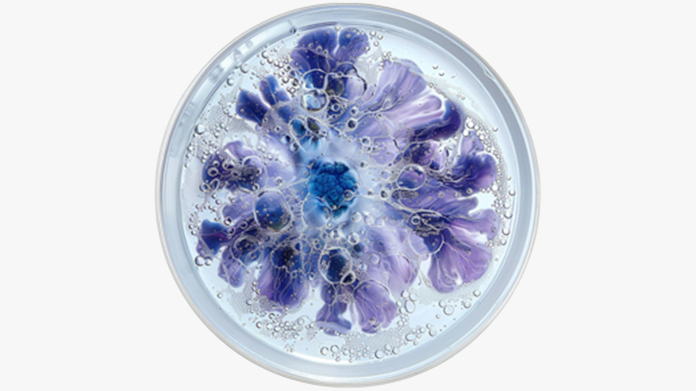Depression: 5 plants to help beat the blues and low mood
Are you going through a difficult period? Suffering from low mood? There are natural substances that can help to banish the blues and get you back on track.

Klamath: a super-algae that helps improve mood
Klamath, or Aphanizomenon flos-aquae (AFA) to give its scientific name, is a microscopic blue-green algae and a genus of cyanobacteria. It grows in Lake Klamath in Oregon, where it has long been consumed by Native Americans.
Now cultivated in the lake, just 50,000 tons are harvested each year which are then freeze-dried to preserve all the algae’s nutrients. This low rate of harvest and method of drying also makes it a rare substance.
A highly-popular super-algae and super-food, Klamath is a veritable mine of vitamins (it contains provitamin A, vitamins B1, B2, B3, B5, B6, B8, B9, B12, vitamins C, E and K), as well as proteins (which represent 50% of the dry material), calcium, magnesium, sodium, phosphorus and potassium (1).
Most importantly, Klamath algae contains phenylethylamine (PEA), an alkaloid that acts as a stimulant of the central nervous system.
This alkaloid is sometimes referred to as the ‘love drug ’, because the body produces it naturally when we ‘fall’ for someone.
It is this exact molecule that actually triggers the feeling of well-being and ‘walking on air’ experienced by those in love.
As a result of its phenylethylamine content, Klamath algae thus helps to confer positive effects on mood (2). So if you’re suffering from a case of the blues, you could try a supplement such as AFA Extract.
Ashwagandha: an Ayurvedic herb for supporting emotional equilibrium
Alongside holy basil, ashwagandha, the botanical name of which is Withania somnifera, is a key plant in Ayurveda, India’s age-old traditional system of medicine which focuses on balancing the mind and body (3).
Rich in piperidine, pyrazole, pyrrolidine and other alkaloids, as well as in withanolides, beta-sitosterol and other phytosterols, ashwagandha’s composition is similar to that of ginseng, and it is indeed often referred to as ‘Indian ginseng’. This ayurvedic herb also contains a number of essential amino acids and trace-elements (4).
Classified as an ‘adaptogen’, which means it can help the body manage stress of various sorts, ashwagandha is used in traditional medicine for a variety of problems. Most importantly, it has been shown in a number of studies to provide excellent support during periods of anxiety and nervous tension, as it promotes relaxation, emotional equilibrium and general well-being. (5)
Supplementing with Super Ashwagandha can therefore be very helpful for dealing with low mood or episodes of anxiety.
St. John’s Wort: a perennial plant long used for ‘chasing away the devil’
Hypericum perforatum, or Saint-John’s wort, is a perennial herb which grows naturally on slopes and in meadows. It has been used throughout Europe for centuries for addressing various problems.
In the Middle Ages, it was used as a topical treatment for mild burns and insect bites … but above all for ‘chasing away the devil’ (in other words, for driving away tormenting spirits).
Indeed, it is primarily its benefits for anxiety and depressive conditions which make it so widely used and studied today (6). St. John’s Wort contains active substances thought to act as inhibitors of the reuptake of serotonin, dopamine and noradrenalin, the famous ‘happiness hormones’ (7-8).
A course of St John’s Wort Extract can therefore help to restore emotional balance and mental and physical well-being, and to maintain good quality sleep and a positive mood.
Valerian: a medicinal plant that helps support mental well-being
Dating back to the era of Greek and Roman physicians such as Hippocrates, Dioscorides and Galen, valerian is an ancient medicinal plant used throughout Europe and Asia. Today, it features in a number of phytotherapy treatments, particularly those for insomnia (9).
Valerenic acid, valepotriates, glutamine, etc.: valerian contains a number of compounds, some quite specific.
However, taking each of these molecules separately does not appear to have a significant effect, whereas double-blind research shows that taking an extract of Valeriana officinalis, as it’s known botanically, offers beneficial effects on anxiety and sleep (10).
So while its mechanisms of action remain poorly understood, valerian is recognised as helping you to maintain good quality sleep, and cope with a hectic lifestyle or irritability, as well as to help induce a feeling of well-being. Valerian is included, for example, in the formulation Advanced Sleep Formula, for its ability to promote optimal relaxation.
Eleutherococcus: the excellent ‘Siberian ginseng’
A thorny shrub, the root of which is used in phytotherapy, eleutherococcus grows in extreme conditions in the heart of Siberia. This ‘Siberian ginseng’ is also classified by phytotherapists as an adaptogen (11).
Eleutherococcus senticosus is recognised for its effects on physical and mental health. In particular, it’s thought to support recovery in cases of weakness, exhaustion, fatigue, during convalescence, etc. In general, it is believed to increase mental and physical energy.
The supplement Adrenal Support provides a good intake of eleutherococcus. This Siberian plant constitutes an effective solution when you’re run-down or going through a bad patch.
References
- Mycosporine-like Amino Acids and Other Phytochemicals Directly Detected by High-Resolution NMR on Klamath (Aphanizomenon flos-aquae) Blue-Green Algae, Valeria Righi, Francesca Parenti, Luisa Schenetti, and Adele Mucci, Journal of Agricultural and Food Chemistry 2016 64 (35), 6708-6715, DOI: 10.1021/acs.jafc.6b02615
- Genazzani AD, Chierchia E, Lanzoni C, et al. [Effects of Klamath Algae extract on psychological disorders and depression in menopausal women: a pilot study]. Minerva Ginecologica. 2010 Oct;62(5):381-388.
- Scientific Basis for the Therapeutic Use of Withania somnifera (Ashwagandha): A Review, Lakshmi-Chandra Mishra, MD (Ayur), PhD, Betsy B. Singh, PhD, Simon Dagenais, BA, Alternative Medicine Review Volume 5 Number 4 2000
- Withania somnifera (Ashwagandha): A Review, Girdhari Lal Gupta and A. C. Rana, Pharmacognosy Reviews, Vol 1, Issue 1, Jan- May, 2007
- An Alternative Treatment for Anxiety: A Systematic Review of Human Trial Results Reported for the Ayurvedic Herb Ashwagandha (Withania somnifera), Morgan A. Pratte, Kaushal B. Nanavati, Virginia Young, and Christopher P. Morley.The Journal of Alternative and Complementary Medicine.Dec 2014.901-908.http://doi.org/10.1089/acm.2014.0177
- Müldner H, Zöller M. [Antidepressive effect of a Hypericum extract standardized to an active hypericine complex. Biochemical and clinical studies] Arzneimittel-forschung. 1984 ;34(8):918-920.
- https://www.supersmart.com/fr/blog/stress-moral/millepertuis-comment-cette-plante-favoriserait-le-bien-etre-mental-s248
- https://www.vidal.fr/parapharmacie/phytotherapie-plantes/millepertuis-hypericum-perforatum.html
- https://www.vidal.fr/parapharmacie/phytotherapie-plantes/valeriane-valeriana-officinalis.html
- Sebastián Fernández, Cristina Wasowski, Alejandro C Paladini, Mariel Marder, Sedative and sleep-enhancing properties of linarin, a flavonoid-isolated from Valeriana officinalis, Pharmacology Biochemistry and Behavior, Volume 77, Issue 2, 2004, Pages 399-404, ISSN 0091-3057, https://doi.org/10.1016/j.pbb.2003.12.003.
- N.V. LAZAREV 7e congrès soviétique de physiologie, biochimie et pharmacologie, 1947 p. 579
Keywords
66 Days
Fiables y Recomendables
Como siempre estáis siempre ofreciendo alternativas naturales a los diversos problemas de Salud con un buen despliegue de información y una variada gama de productos. Y os felicito por el servicio de entrega que hacéis ahora que supera con creces el de antes.
Mariano Navarro Sanchez
66 Days
produits innovants
produits innovants, avec une composition claire
véronique de sainte marie
66 Days
Ravie et Très Satisfaite de Ma Commande…
Ravie et Très Satisfaite de Ma Commande et de Mes Commandes Très Bons Produits
Brigitte D.
66 Days
Produits fiables
Produits fiables
jacqueline
66 Days
Tout est OK 👌
Tout est OK 👌
RICHARD Bertrand
67 Days
Bestelle das Produkt seit Jahren immer…
Bestelle das Produkt seit Jahren immer wieder ist echt super, Preis Leistung ist ok könnte noch ein bisschen billiger sein aber sonst ok
SONJA Hofbauer
67 Days
Commentaire
Excellent services
DIDDY Mohamed
67 Days
Livraison rapide
Livraison rapide
devouass
67 Days
Schnelle Lieferung
Schnelle Lieferung. Gute Begleitung der Lieferung
SCHARWAECHTER Hans Juergen
67 Days
Efficace rapidement
J’ai commencé à prendre les facteurs de croissance osseuse alors que j’étais en plein accès douloureux d’ostéoporose. Mon état s’est stabilisé en quelques jours puis les douleurs ont diminué régulièrement. Je pense continuer ce remède pendant quelques mois puis 1 gélule par jour et une pause etc..
Françoise Delfour
67 Days
Rapidité de livraison avec prestataire…
Rapidité de livraison avec prestataire fiable ! Toujours impeccable.
Virginie
67 Days
Siempre buenas experiencias y cada vez…
Siempre buenas experiencias y cada vez más rápidos los envíos
Elsje Fokkelman
67 Days
Livraison rapide et en parfait état
Livraison rapide et en parfait état. Jamais d'erreur.
WUILLEMIN Sylvie
68 Days
J'ai trouvé rapidement sur le site le…
J'ai trouvé rapidement sur le site le complément qui m'était nécessaire et la livraison a été très rapide. Merci.
Client
68 Days
Je recommande ces produits
Facilité pour passer les commandes. Délais de livraison tenus. Produits de qualité. Je suis cliente depuis longtemps et très satisfaite.
Alexandre PUBERT



